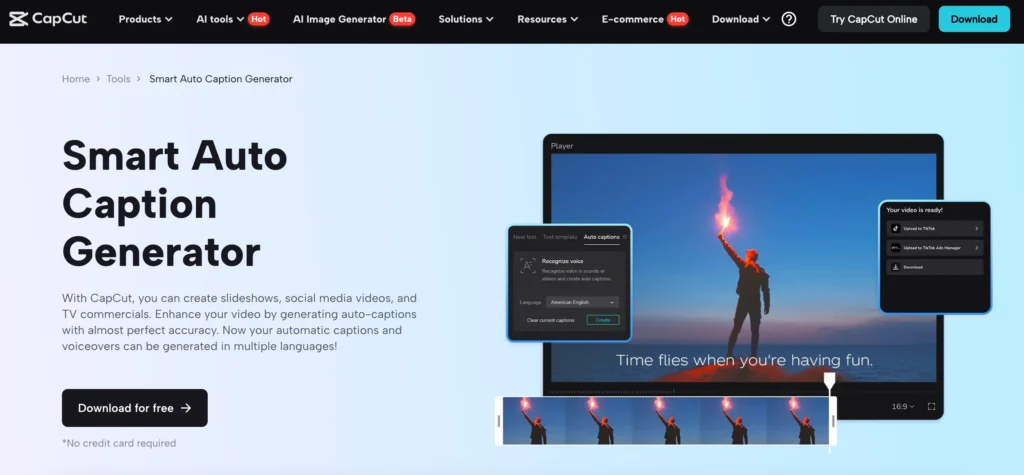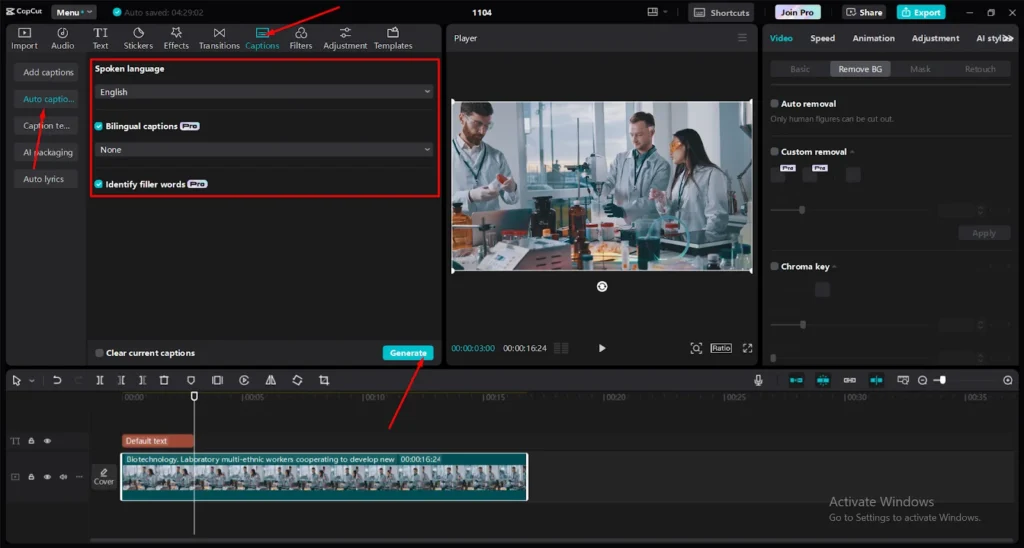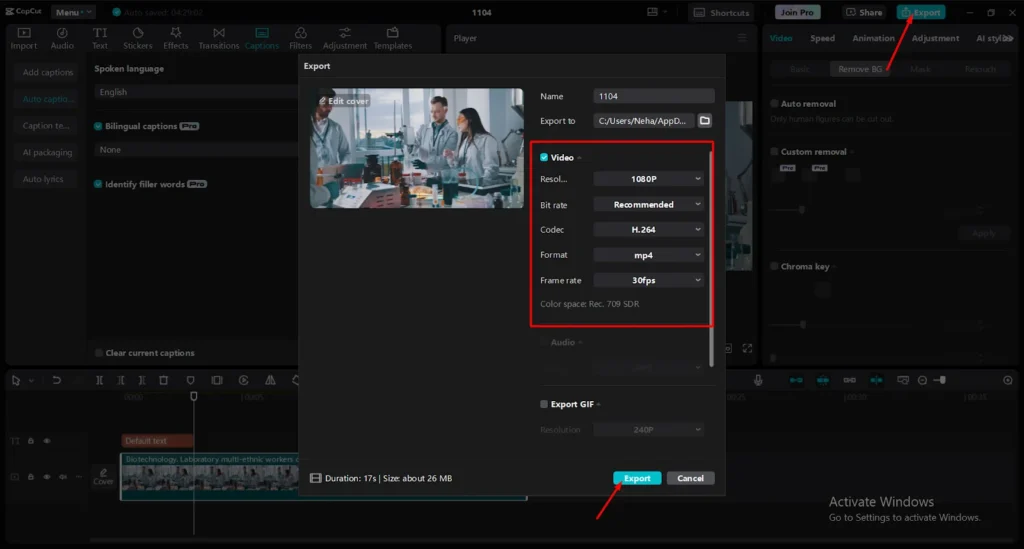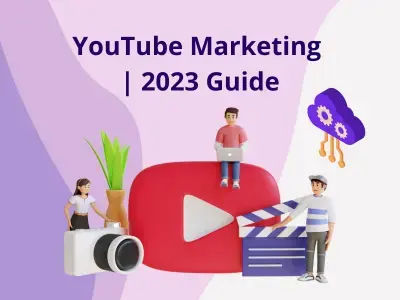Telemedicine has changed healthcare access in recent years. From virtual doctor’s appointments to online consultations, telemedicine let patients to connect with their healthcare providers from anywhere. But with this new convenience also comes a big responsibility: making sure that telemedicine is accessible to everyone. This is where AI-powered auto captions play a major role. For people who have trouble hearing, or who may not speak English as their first language, captions in telemedicine videos can make all the difference.
In this article, we’ll find out why accessibility in telemedicine is so important and how AI auto captions are changing the game. Whether you’re a healthcare provider, a patient, or just interested in technology, you’ll learn how AI caption generators are helping to make telemedicine better for everyone.

What Are AI Auto Captions?
So, what exactly are AI auto captions? AI auto captions are subtitles created by artificial intelligence (AI) that appear on the screen as people talk. These captions are generated automatically in real time, meaning that they can show up on a video as the person speaks. This is extremely helpful in telemedicine consultations, where doctors and patients often need to communicate clearly and quickly.
AI auto-captioning technology converts spoken phrases into text by listening to them. It’s fast and doesn’t require someone to type out every word. This technology has become much more advanced in recent years, meaning it can even recognize medical terms and technical words that may come up during a healthcare consultation. And the best part? It’s getting better all the time!
As digital health tools continue to evolve, with recent statistics showing telemedicine usage grew by 25% during the global pandemic, these auto-captioning technologies are becoming essential components of accessible healthcare delivery.
Benefits of AI Auto Captions in Telemedicine
Let’s get into the specific ways that AI auto captions are making telemedicine more accessible and effective.
- Helping Deaf and Hard of Hearing Patients
Accessing healthcare can be difficult for patients who are hard of hearing or deaf, particularly with telemedicine. Without captions, they may struggle to understand what their doctor is saying, missing out on key information. With AI auto captions, however, these patients can read along as the doctor speaks, ensuring they don’t miss anything important.
Captions also help patients who may not have severe hearing loss but still find it hard to catch every word in a video call. For instance, older adults who may experience slight hearing difficulties can benefit from having words on the screen to follow along. Moreover, you can also remove background from videos to make your captions and subject more highlighted.
- Supporting Non-Native Speakers
Imagine a patient whose first language isn’t English. They might understand a lot of what the doctor is saying but still struggle with medical terminology or fast speech. Captions give these patients an extra layer of understanding, allowing them to follow the consultation more easily.
- Boosting Understanding for All Patients
Even patients without specific needs for accessibility can benefit from captions. According to research, people retain knowledge better when they can see and hear it. In telemedicine, where complex medical terms and instructions are often used, captions provide a second way to absorb the information.
- Improving Record-Keeping and Compliance
Another huge benefit of AI captions in telemedicine is that they can be saved as part of a patient’s record. This means that if a patient or doctor needs to review what was discussed, they have a text record of the conversation. This is particularly helpful for patients managing complicated medical issues or for follow-up consultations.
Captions can also help healthcare providers can follow regulations like the Americans with Disabilities Act (ADA) or HIPAA. Accessible healthcare is not only morally right, but frequently required by law. Captions improve patient care while ensuring that healthcare providers are adhering to these standards.
How to Add Auto Captions to Health Videos
Adding captions to health videos is simple and can significantly improve accessibility. Here’s how to add auto captions easily by using the CapCut desktop video editor, the best video editing software.
Step 1: Import Your Video
To begin, open the CapCut desktop editor on your computer and start a new project. You have two options: drag your video file straight onto the workspace or click the “Import” button. Place the video on the timeline to have it ready for editing when it has been uploaded. This will set you up to start generating captions for the video.

Step 2: Generate Auto Captions
With your video ready on the timeline, go to the “Captions” tab in the menu on the left side. Click on “Auto Captions” and choose your video’s language. The CapCut desktop video editor will automatically analyze the audio and generate captions for every word spoken in the video. Give it a few moments to process—when it’s done, you’ll see the captions appear over your video in the timeline.

Step 3: Edit and Customize Your Captions
Now that the captions are generated, it’s time to make any adjustments.Watch the video again and look for any caption mistakes. You can use the tool to change the font, size, color, and positioning of the captions to fit your movie style, as well as modify the text directly if necessary. Once you’re satisfied with the captions, you’re ready to export your fully accessible health video.

Conclusion
AI auto captions are a powerful tool for making telemedicine consultations more accessible. By providing captions in real time, they help ensure that everyone, from hard-of-hearing patients to non-native speakers, can fully understand and participate in their healthcare. As technology improves, we can expect even greater accessibility to telemedicine, leading to better, more inclusive healthcare for all.
Read all about Best AI Personal Assistant Tools in 2024.
- Free Software Alternatives to Premium Design, Writing & Cybersecurity Tools - April 4, 2025
- 6 Best AI Human Resources Tools in 2025 - March 14, 2025
- Affiliate Software for SaaS Business - March 10, 2025



Great insight on how AI auto-captions enhance accessibility in telemedicine! It’s exciting to see technology improving healthcare for everyone. Thanks for sharing.